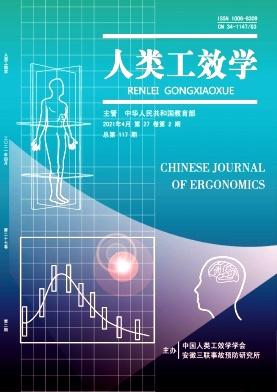Prevalence and associated risk factors of work-related muscoskeletal disorders among road construction workers in a Nigerian community
引用次数: 3
Abstract
Work-related musculoskeletal disorders (WRMDs) represent a significant occupational problem among road construction workers. This study conducted a prevalence and symptom survey of WRMDs among road construction workers in a Nigerian community and its relationship with risk factors over a twelve month period. The study involved 100 consecutively sampled respondents from construction workers in a Nigerian community. The short version of the Dutch Musculoskeletal questionnaire was used to collect data on demographics, 12 months' prevalence, risk factor and health seeking behavior of respondents. Data were analyzed using descriptive statistics, while spearman rank correlation was used to test correlation at 0.05 α level. A high WRMDs prevalence of 66% rate was reported, with low back (55%) being the most frequently reported body part for symptoms, followed by neck at 45%, while the least prevalent was the left hip/thigh (8%). Significant correlations existed between WRMDs and BMI (p = 0.003), work hours per week (p = 0.018), work exertion (p = 0.004), risk factors (p = 0.001). Logistics regression analysis showed that work organizational factors were significant predictors of WRMDs report of symptoms. Meanwhile, self-medication was the major means adopted by the respondents to alleviate musculoskeletal pain. It is recommended that preventive strategies be adopted to minimize occurrence of WRMDs among these workers in Nigeria.尼日利亚社区筑路工人中与工作有关的肌肉骨骼疾病的患病率及相关危险因素
与工作有关的肌肉骨骼疾病(wrmd)是道路建设工人中一个重要的职业问题。本研究对尼日利亚某社区道路建设工人的wrmd患病率和症状进行了为期12个月的调查,并分析了其与危险因素的关系。该研究涉及100名尼日利亚社区建筑工人的连续抽样调查对象。荷兰肌肉骨骼调查问卷的简短版本用于收集人口统计数据,12个月的患病率,风险因素和受访者的健康寻求行为。数据分析采用描述性统计,spearman秩相关在0.05 α水平下检验相关性。据报道,wrmd的患病率高达66%,腰背部(55%)是最常报告出现症状的身体部位,其次是颈部(45%),而左臀部/大腿(8%)的患病率最低。wrmd与BMI (p = 0.003)、每周工作时间(p = 0.018)、工作强度(p = 0.004)、危险因素(p = 0.001)存在显著相关。logistic回归分析显示,工作组织因素是影响wrmd症状报告的显著因素。同时,自我药疗是受访者缓解肌肉骨骼疼痛的主要手段。建议采取预防战略,尽量减少尼日利亚这些工人中发生大规模杀伤性武器的情况。
本文章由计算机程序翻译,如有差异,请以英文原文为准。
求助全文
约1分钟内获得全文
求助全文

 求助内容:
求助内容: 应助结果提醒方式:
应助结果提醒方式:


